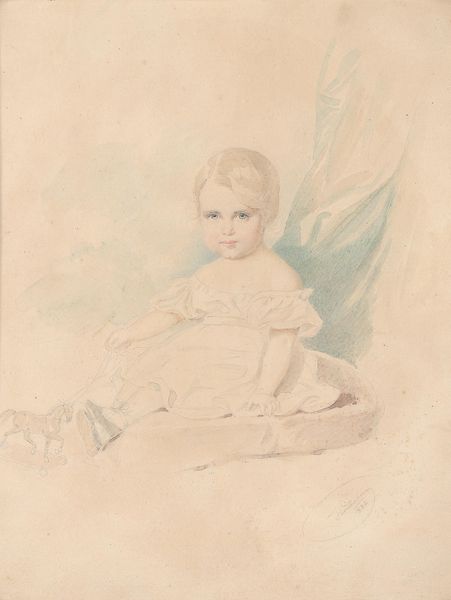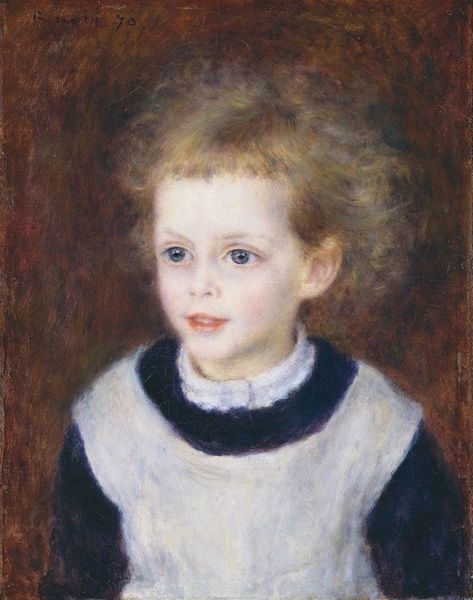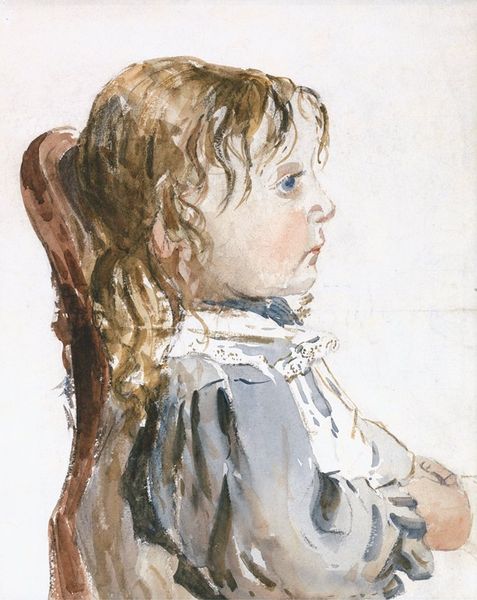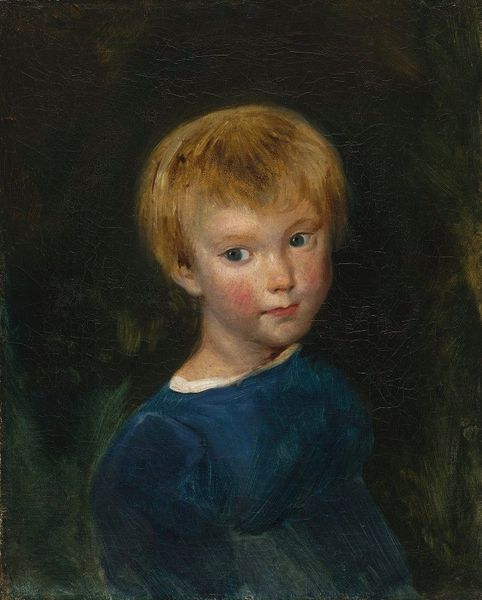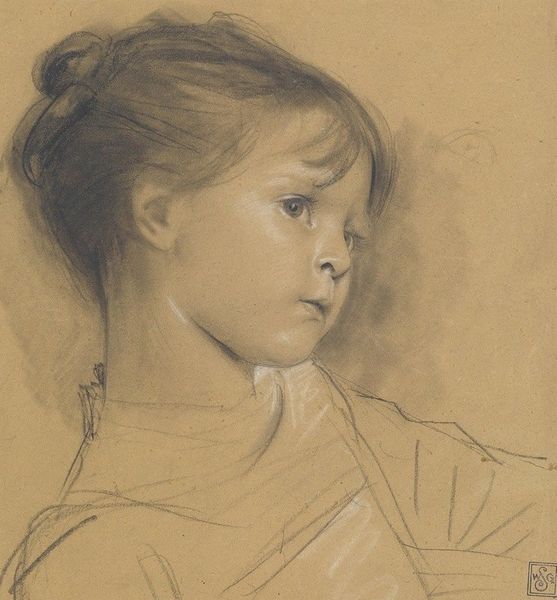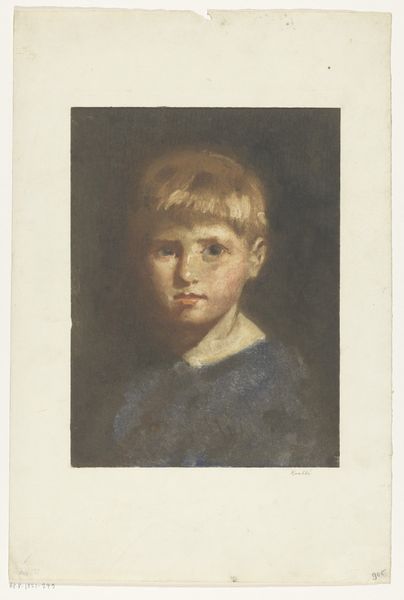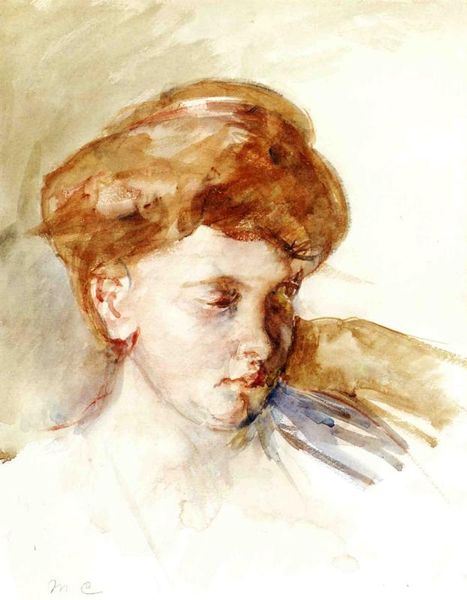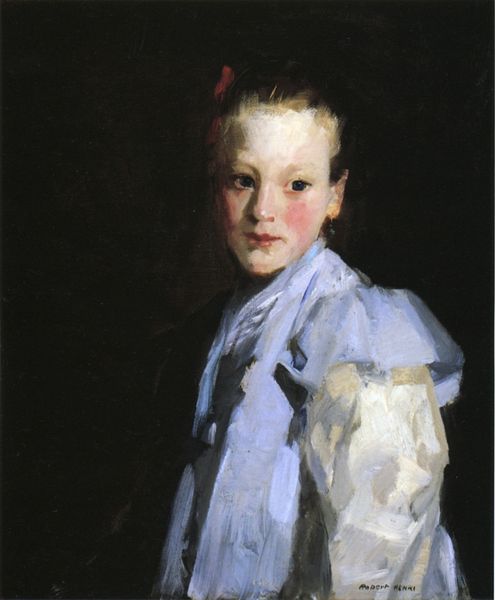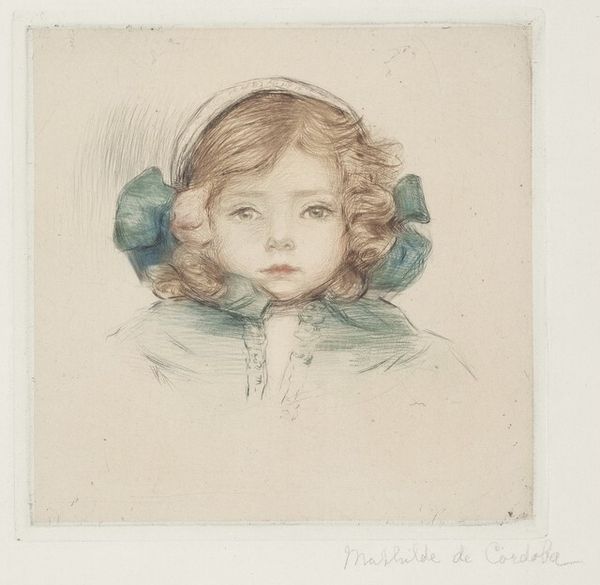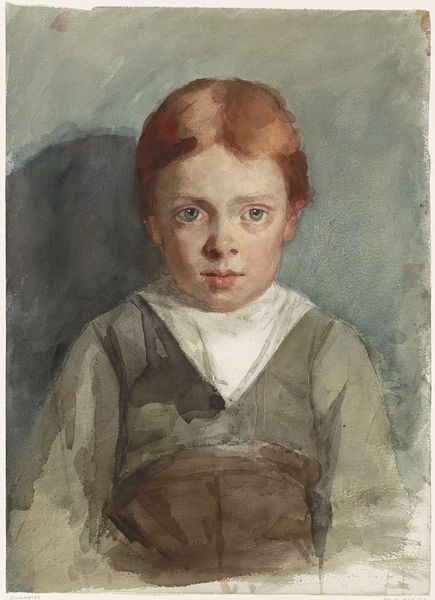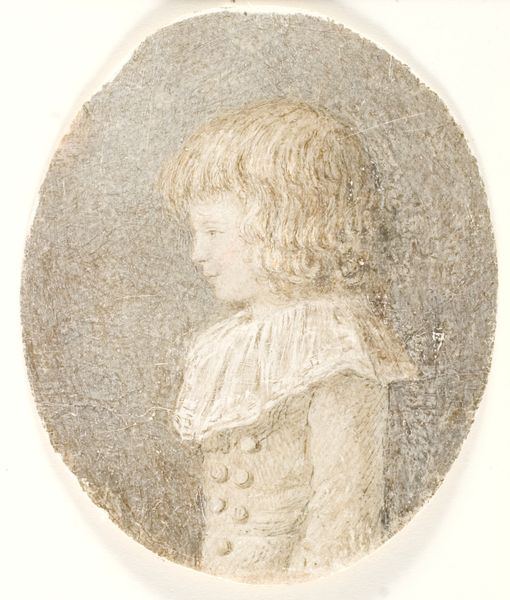
painting, watercolor
#
portrait
#
figurative
#
painting
#
figuration
#
watercolor
#
portrait drawing
#
watercolor
#
realism
Copyright: Public Domain: Artvee
Editor: This is Albrecht Anker's "Study of a Standing Girl," done in watercolor. It's... delicate. There's a wistful, almost melancholic feeling about it. How do you read this piece? Curator: For me, Anker’s work operates as a window into the socio-cultural fabric of his time. Think about the role of portraiture during the late 19th century; it served not just as an individual likeness but often reinforced societal values and class structures. Is this girl from Anker's family, or is it a study for a larger, more formal painting that may carry further significance about childhood and social roles? What details tell us about her position? Editor: The plain dress maybe? And her gaze is averted. Curator: Exactly! What statements might Anker be making, consciously or unconsciously, about childhood innocence, labor, or the expectations placed upon young girls within that historical context? Editor: I hadn't thought of it in terms of expectations or labor. Just a simple portrait. Curator: It is a study, but even a study tells us something about the artist and their relationship with the world. Her averted gaze and simple dress could be read as signs of modesty, of the quiet domestic roles often assigned to women. Does it perhaps suggest constraints and limitations of that era? Consider who would have viewed this piece and how it might have been displayed and interpreted then, compared to how we see it today within a museum. Editor: That's a huge difference! I am looking at it as a picture, while it would have functioned as so much more for his contemporary audiences. Curator: Precisely. Recognizing the evolving function of art through different eras completely reshapes our perspective. Editor: I’ll never see a portrait the same way again.
Comments
No comments
Be the first to comment and join the conversation on the ultimate creative platform.
